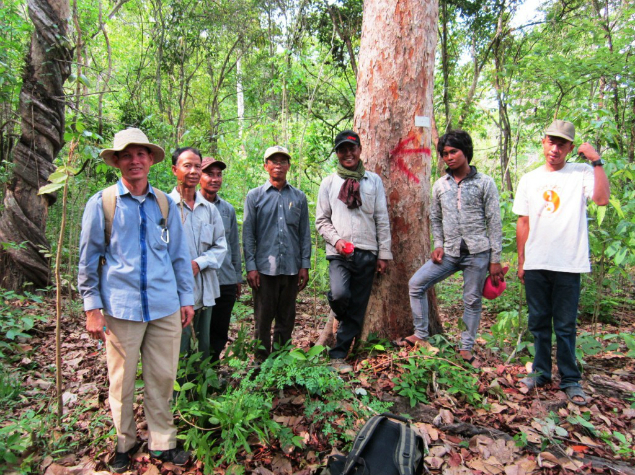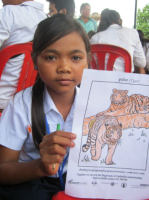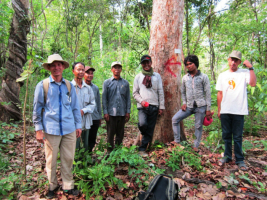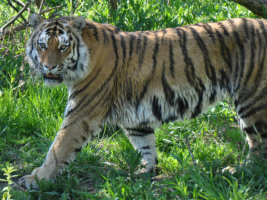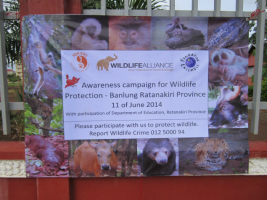Strengthening the foundations of long-term conservation and management of a key biodiversity area in the Lower Mekong
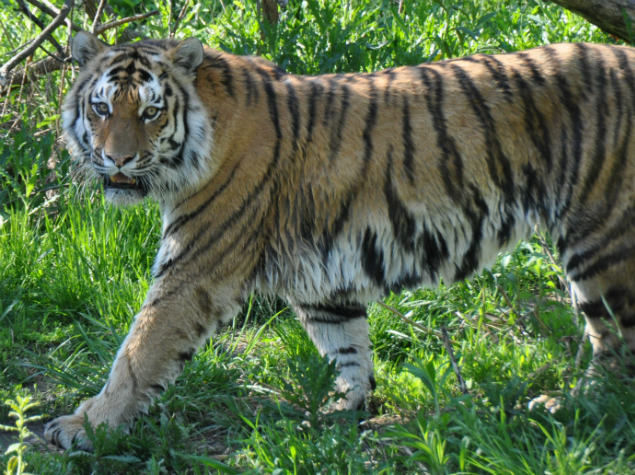
The Veun Sai–Siem Pang forest covers 55 000 hectares bordering the Virachey National Park in north-eastern Cambodia. With two adjacent Parks in Laos and Vietnam, it is the largest unbroken expanse of intact forest in Asia, and the best chance for maintaining the iconic wildlife populations of Southeast Asia.
The area is inhabited by 4000 members of ethnic minority communities in five villages (Kapin, Talae, Backae, I Tub and Kang Nuok), who still live mainly from gathering forest products and hunting to supply the Chinese market for meat and medicinal products. The challenge is, therefore, to enable this population to shift from hunting and gathering to farming and animal husbandry so as to protect the forest and its exceptional wildlife while at the same time upholding the population’s historical rights over the forest.
The majority of the forest’s tree species are also being exploited and illegally exported, mainly for the furniture industry. The main targets are three precious wood species, including Siamese rosewood (Dalbergia cochinchinensis). The extraction of certain resins is also widespread.
Poh Kao’s activities in this forest area have four main objectives:
- Environmental: Convince the communities, especially their children, of the importance of protecting and looking after the forest.
- Economic: Improve the living conditions of the ethnic communities by supporting the development of farming and animal husbandry as an alternative to gathering forest products.
- Social: Improve the living conditions of the ethnic communities by promoting access to basic needs of the local population.
- Governance: Obtain official, State-recognized protected status for the forest, in which the populations’ rights are defined and respected, particularly with regard to their role in the management of the site.
One specific project component aims to encourage the development of a number of forest resources: these include medicinal plants, to be grown for food and, potentially, for revenue, and Gurjum balsam, which will be cultivated sustainably and marketed more effectively.
In the context of this partnership, Fondation Ensemble is funding the environmental and governance components of the project.
Final Report Summary
The project was terminated in July 2015 due to the interruption of funding by some donors, because of security threats on the ground for the team. Despite the premature cessation of the activities, the program yielded significant results in the four main objective areas.
- Environmental: Poh Kao organized 358 workshops on biodiversity conservation and the environment with an average of 22 school pupils and participation of other community members.
- Economic: The villagers have acquired additional sources of income from chicken, pigs, and the cultivation of medicinal herbs, rice and fruit trees. In addition to this, 70 workshops on animal breeding, gardenin, and medicinal herbs were held. Lastly, veterinary care was provided to farm animals.
- Social: 9 wells and 4 community houses were built.
- Governance: Forest management committees have been established. Committee members are re-elected every year and sessions are held monthly. Furthermore, annual conservation contracts have been signed by each village and two zoning maps have been produced to set the foundations for greater management of the area.
Check out our article “NGO Poh Kao receives an award for its work in Cambodia”.



